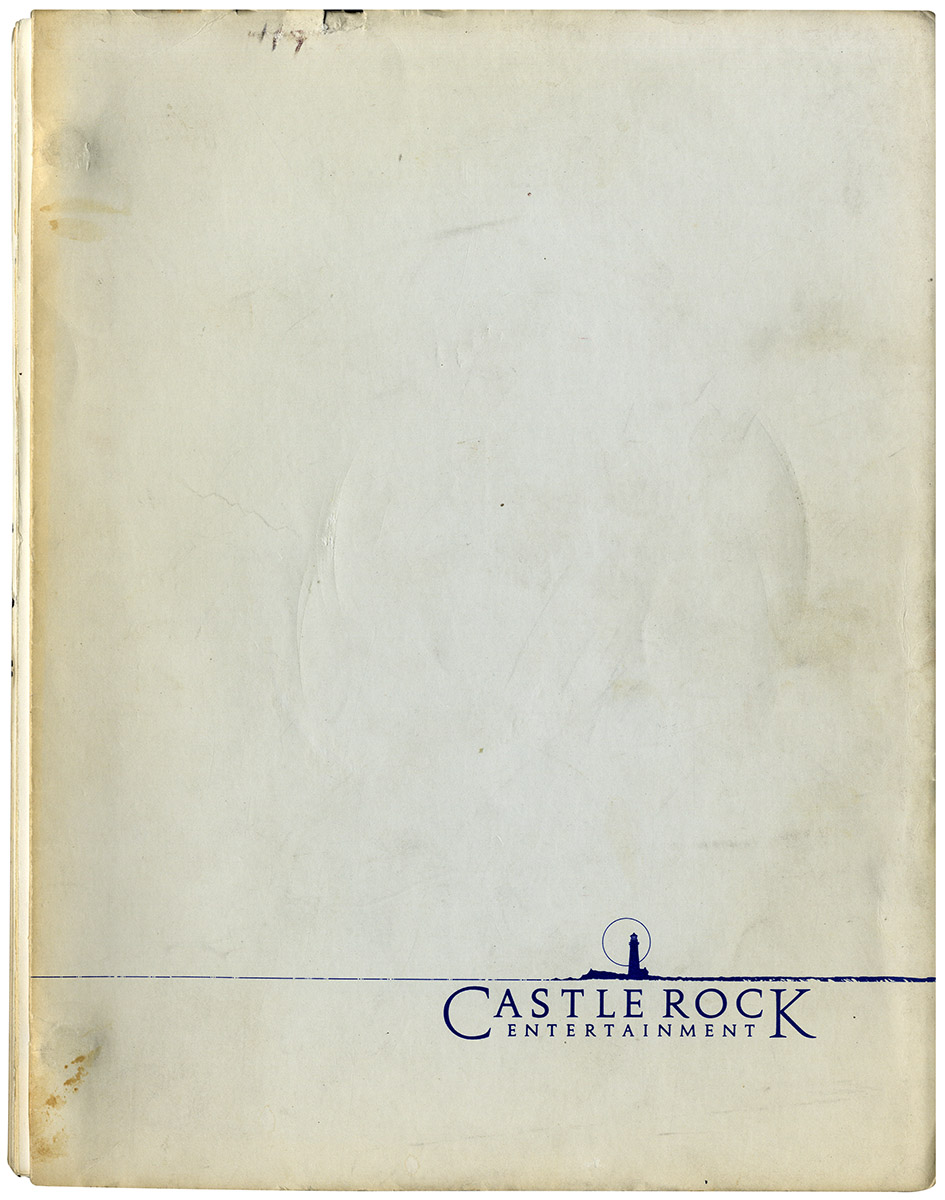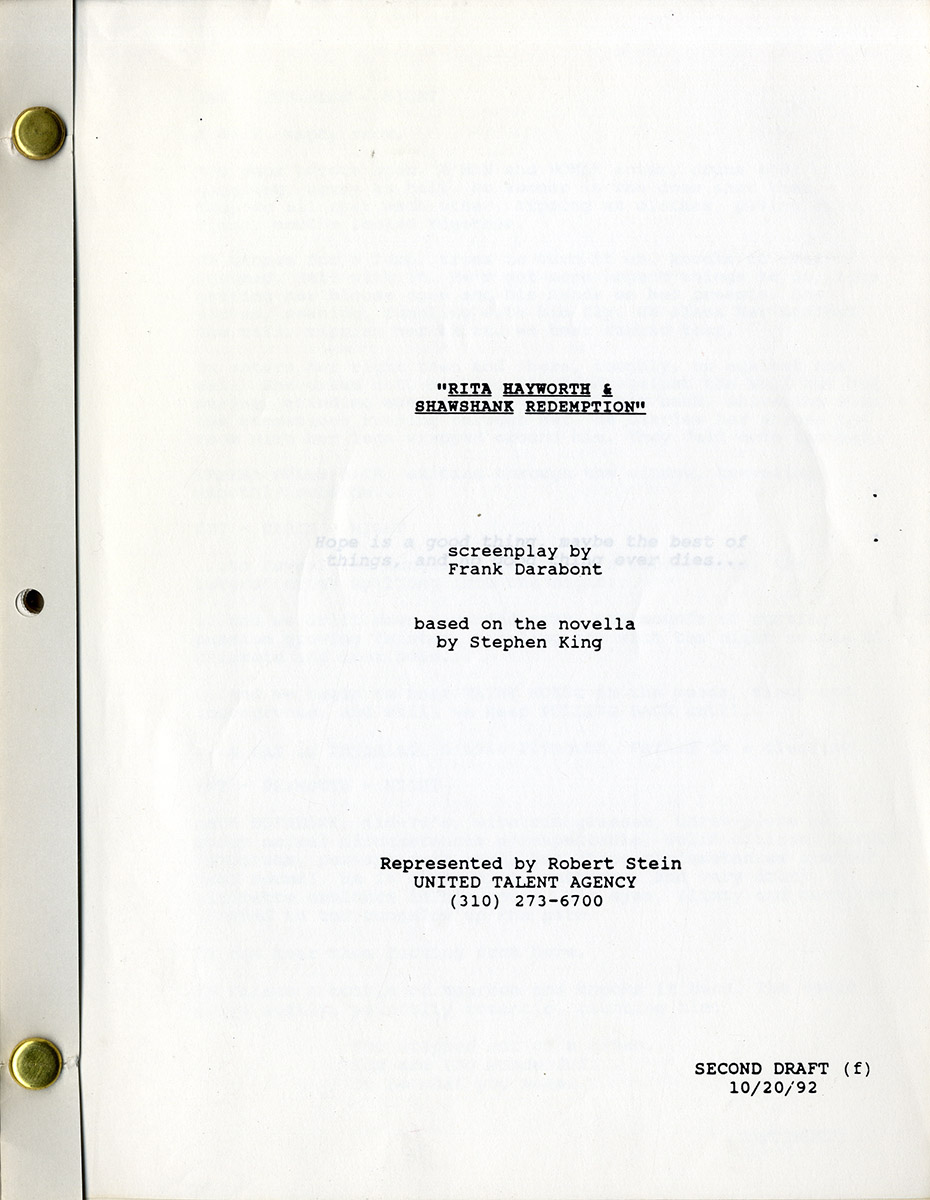Stephen King (source) THE SHAWSHANK REDEMPTION (Oct 20, 1992) Second draft film script by Frank Darabont
[Los Angeles]: Castle Rock Entertainment, 1992. Vintage original film script, 11 x 8 1/2″ (28 x 22 cm.), brad bound, printed studio wrappers, 115 pp., under working title Rita Hayworth & Shawshank Redemption. Mechanically reproduced (with no copied punch holes). Light stains and wear to wrappers, just about fine in near fine wrappers.
The title page denotes this as the Second Draft Screenplay by Frank Darabont, dated October 20, 1992, and based on the novella Rita Hayworth and Shawshank Redemption by Stephen King. Rita Hayworth and Shawshank Redemption is a novella by Stephen King from his 1982 collection Different Seasons. It was adapted for the screen by Frank Darabont in 1994 as The Shawshank Redemption, a movie that was nominated for seven Academy Awards, including Best Picture and Best Adapted Screenplay. The Shawshank Redemption was the first of three Stephen King adaptations written and directed by Darabont, followed by The Green Mile (1999) and The Mist (2007). King has declared it to be his favorite, alongside Stand by Me, of the movies adapted from his works.
The Shawshank Redemption was the first theatrical feature directed by Frank Darabont (born Ferenc Árpád Darabont in 1959 in Montbéliard, France) after one TV movie, Buried Alive (1990), and several prior screenplays. Author King claimed to be amazed at how his story, largely focused on one prisoner, Red, contemplating a fellow prisoner, Andy, could be turned into a feature film. Darabont’s ingenious screenplay alters some aspects of King’s novella and expands on others. In the novella, the character of Red is identified as Irish. In the movie, he is a black man played by Morgan Freeman. In the novella, the character of Brooks, an elderly prisoner played by James Whitmore in the movie, is a comparatively minor figure who dies in a retirement home. In the movie, he becomes a significantly tragic figure, an example of “institutionalization” who hangs himself shortly after being paroled. Young Tommy (Gil Bellows), who in the novella trades evidence exonerating Andy for transfer to a nicer prison, is in the screenplay murdered by one of the guards on the orders of the Bible-quoting Warden Norton (Bob Gunton). The screenplay’s Warden Norton is a composite of several wardens in the novella.
The Shawshank Redemption is essentially a fable of friendship and hope. Narrated in voiceover by prisoner Red, it tells the inspiring story, spanning 20 years, of Andy Dufresne (Tim Robbins), a banker sentenced to life in prison in 1947 for a murder he did not commit, how he adjusts to the brutality of prison life, and how he has a positive, almost saint-like, effect on those around him, especially the older prisoner Red, who becomes his best friend. It is a story of adversity and triumph in which the sadistic, exploitative, and corrupt are eventually punished, and the good are ultimately rewarded. The screenplay ends with Andy and Red living happily together on a Mexican beach.
Darabont’s Second Draft screenplay is virtually identical to the completed film with only slight changes. Some of the narration and dialogue is trimmed. One interesting change: in the screenplay’s description of Andy’s first terrifying night in prison, a moment omitted from the movie, we see him alone in his cell reciting T. S. Eliot to himself, “Shape without form, shade without color, paralyzed force, gesture without motion… ”
Another minor change: in the screenplay’s description of the prisoners’ movie night, the prisoners are watching Ray Milland in The Lost Weekend. In Darabont’s completed film, the prisoners are watching Rita Hayworth in Gilda, which is clearly more appropriate since, in the screenplay’s very next scene, Andy asks Red — a convict who can obtain anything — if he can get him a poster of Rita Hayworth.
In another screenplay scene (omitted from the movie for obvious ratings-related reasons) the warden institutes an outdoor work program, and a female Life magazine photographer asks the prisoners work gang if they would mind posing for a photo, and they comply by exposing themselves to her!
Though not a box office success on its initial release, The Shawshank Redemption soon became a cult classic, a perennial on cable television. In 2005, the Writers Guild of America listed Darabont’s screenplay at number 22 on its list of the 101 greatest screenplays.
Some have even interpreted it as a religious allegory with Andy as a Christ figure. In any event, it is a film with a message that many viewers have taken to heart, stated explicitly in the epigraph to Darabont’s screenplay: “Hope is a good thing, maybe the best of things, and no good thing ever dies…”
Out of stock
Related products
-
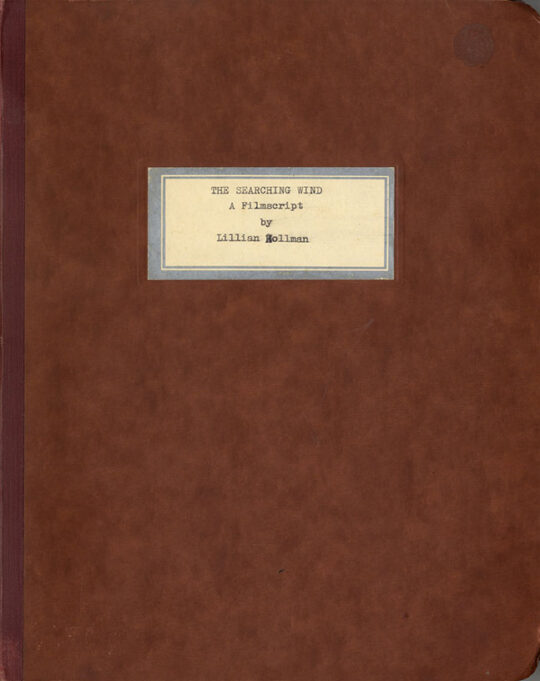
SEARCHING WIND, THE (Nov 7, 1946) Final White script by Lillian Hellman
$1,500.00 Add to cart -
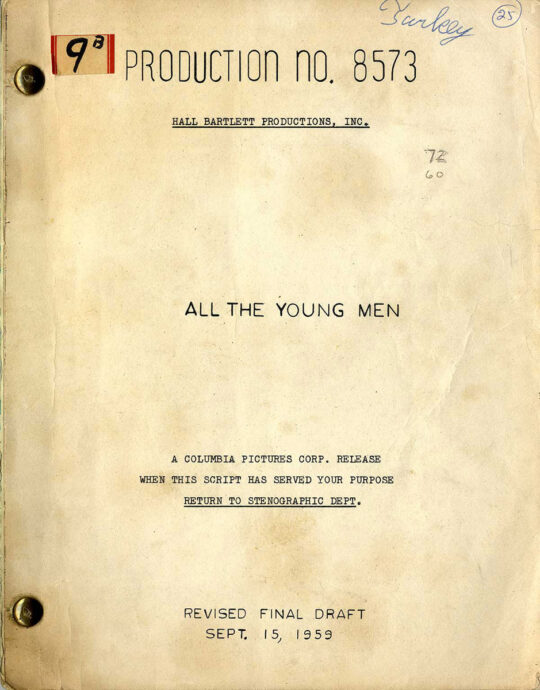
ALL THE YOUNG MEN (Sep 15, 1959) Revised Final Draft script by Hall Bartlett
$450.00 Add to cart -
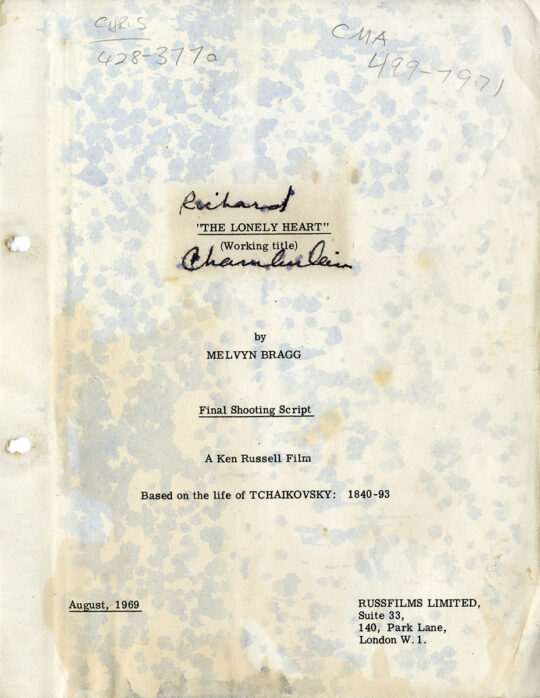
Ken Russell (director) THE MUSIC LOVERS [working title: THE LONELY HEART] (1969) Final shooting script
$3,000.00 Add to cart -
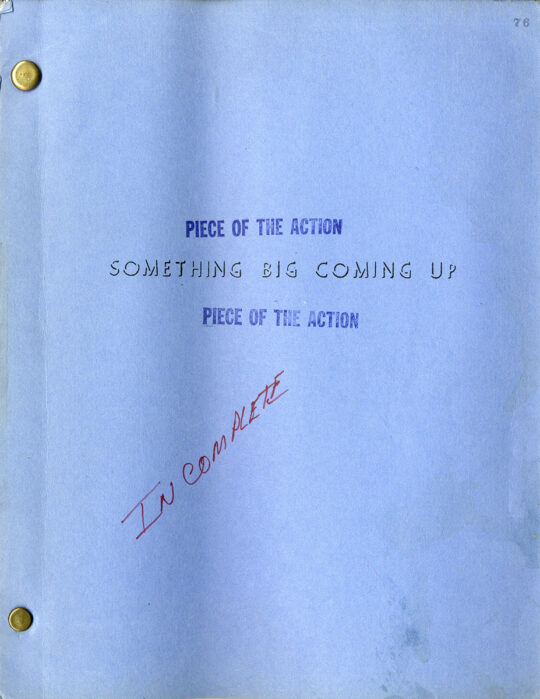
(African American film) A PIECE OF THE ACTION [working title: SOMETHING BIG COMING UP] (Nov 1, 1976) Film script
$750.00 Add to cart

